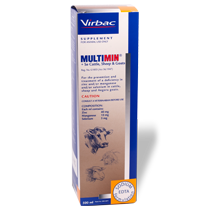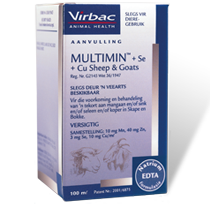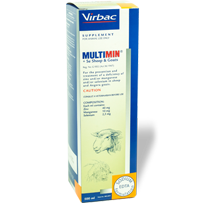
Trace-mineral supplementation and mating season
Trace-mineral supplementation gets far more attention today than in the past and not without reason. The role that trace elements play in optimal production is being understood better than ever thanks to ongoing research on the topic.
Mating season is for most farmers the official start of the reproductive cycle. We also know that reproduction is the main driver of profitable livestock production. Therefore, we should do everything in our power to ensure that it is off to the best possible start.
Reproduction and Nutrition
The importance of nutrition before and during mating season is well known to optimise reproduction and cannot be overstated. Ewes’ condition and body weight should be optimal (3,5) during mating season. It serves as the foundation of reproductive success. The quality and quantity of their nutrition, especially during the last six weeks before mating season, play an important role. Ewes should preferably be in a phase of improving condition just before and during mating season. Flush feeding is an aid that can be considered for ewes that are not in optimal condition before the start of mating season.
Role of Trace Minerals
Although the macro nutritional elements (energy, protein, macro minerals, etc.) form the foundation of nutrition and primarily determine the condition and body weight of ewes, the role of trace minerals cannot be ignored. Trace minerals can be regarded as the “cement” between the bricks that reinforces the structure or the “oil” that makes the gears runs smoothly. Trace minerals play an important role in the many enzyme systems that support all body processes. During mating season, trace minerals play a critical role in processes like oestrous (coming in heat), successful ovulation (release of eggs), fertilisation, and the implantation and survival of the embryo. The contribution of the most important trace minerals during this critical time can be summarised as follows:
- Manganese (Mn) plays a role in the production and regulation of the sex hormones that are important or ewes to come in heat (oestrous), ripening of the follicles/ova, and successful release of eggs.
- Zinc (Zn) plays a major role in the successful fertilisation of the egg and the development of the embryo, since it is important for fast-dividing cells.
- Copper (Cu), along with zinc and manganese, forms part of an enzyme complex that performs a major antioxidising function in the body by neutralising and/or limiting free radicals. This leads to better embryo survival.
- Selenium (Se) is known as the “fertility trace mineral”. It plays an important role in development of ova, fertilisation, and embryo survival. It is, amongst others, an integral part of the enzyme glutathione peroxidase. This enzyme is necessary in the final phase in neutralising certain oxidative free radicals. Optimal levels of selenium, in conjunction with vitamin E, are necessary to prevent/reduce early embryonic losses (resorption). Selenium is also important to support the ewe’s immune system and optimise the action of vaccines.
Supplementation of trace minerals
We should realise that trace-mineral supplementation cannot be considered only and when symptoms of clinical deficiency are observed. Suboptimal levels of trace minerals are just as harmful and although this might seem relatively insignificant and can pass by unnoticed, suboptimal levels have a negative effect on reproduction, production, and immunity.
Oral supplementation of trace minerals by means of licks, serves as the base supplement source throughout the year. It is easy and relatively cheap but is deficient in terms of ensuring the correct intake (due to trough space, dominance in the herd), antagonists (especially high levels of ca, Fe and S), that limit the uptake of certain trace minerals.
Injectable supplementation with products like Multimin® overcomes all the shortcomings of oral supplementation. Each ewe receives her top-up supplementation at the right time when the need increases. The uptake of these trace minerals is not affected by antagonists in the intestinal tract. One of the advantages of the Multimin® formulation is that the selenium in it is available immediately to be built into functional proteins, and be part of important enzymes.
Supplement your ewes with Multimin® around four to six weeks before the start of mating season. For the best results, also supplement with sufficient levels of vitamins A and E. Vitamin A improves the action of zinc and vitamin E supports the action of selenium. A Multimin® top-up supplementation at critical times will greatly improve sheep production.
Value for money
An increase in lambing percentage, even by just one percentage point (e.g. from 120% to 121%) more than justifies the cost of three Multimin® treatments. Jan Hoon (2007) concludes in his trial that “… the supplementation of Angora goats and sheep with a commercial trace-mineral supplement during the experimental period was economically viable.”
Please contact your closest Virbac Technical Advisor for advice regarding product choice and correct positioning.
Hoon JH, Herseman MJ, 2007. Trace Mineral Supplementation of Sheep and Angora Goats in the different grazing areas of South Africa. Grootfontein Agric, Vol 7. No. 1 2007.



